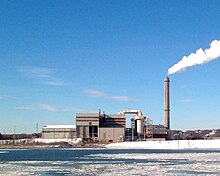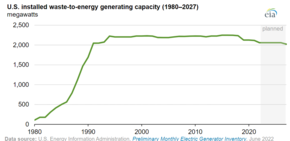
Back محطة تحويل النفايات إلى طاقة Arabic Ersatzbrennstoffkraftwerk German کارخانه تبدیل پسماند به انرژی FA Wurin sarrafa shara HA Pembangkit listrik tenaga sampah ID Termovalorizzatore Italian 廃棄物発電 Japanese Termovalorizator LMO


A waste-to-energy plant is a waste management facility that combusts wastes to produce electricity. This type of power plant is sometimes called a trash-to-energy, municipal waste incineration, energy recovery, or resource recovery plant.
Modern waste-to-energy plants are very different from the trash incinerators that were commonly used until a few decades ago. Unlike modern ones, those plants usually did not remove hazardous or recyclable materials before burning. These incinerators endangered the health of the plant workers and the nearby residents, and most of them did not generate electricity.
Waste-to-energy generation is being increasingly looked at as a potential energy diversification strategy, especially by Sweden, which has been a leader in waste-to-energy production over the past 20 years. The typical range of net electrical energy that can be produced is about 500 to 600 kWh of electricity per ton of waste incinerated.[1] Thus, the incineration of about 2,200 tons per day of waste will produce about 1,200 MWh of electrical energy.